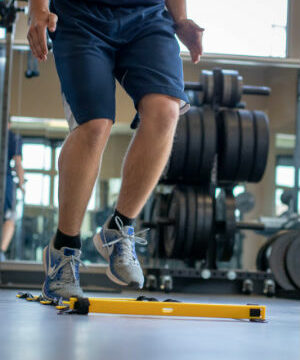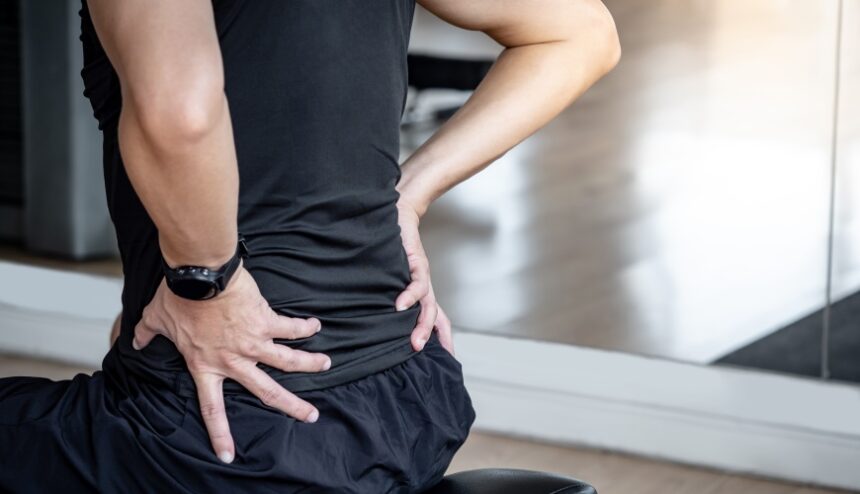 By Joshua Thomas, DO, Orthopedics
By Joshua Thomas, DO, Orthopedics
There is nothing worse than experiencing success with your fitness program only to have it sabotaged by a troublesome injury. Here are five of the most common injuries and what you can do to prevent them. You may do an online search for the recommended exercises to prevent or help treat each injury. Consult your physician before starting an exercise program.
Low Back Pain
The most common complaint of incoming patients is low back pain. Almost everything you do requires using your back, and back problems rarely result from a single activity or accident. Most injuries occur over a period of years or even decades. By strengthening and stretching the muscles of your back, stomach, and thighs, you can help reduce or prevent problems with back pain. (Exercises to help – Supine Pelvic Tilts, Planks, Ball Crunches, Hip Flexor Stretch, Prayer Stretch, and Lying Knee to Chest Stretch)
Shoulder Pain
Shoulder problems have become increasingly common with a greater number of desk jobs around the world. Our upper middle back muscles that stabilize the shoulder blades have weakened, and many shoulders have begun to rotate internally. This can lead to a lack of mobility in your shoulder (especially in external rotation) and increase the risk of injury when lifting objects above your head or performing any throwing or swinging motions. It also increases the chances of irritating, inflaming, or pinching the tendons of the rotator cuff. Strengthening the scapular stabilizers and increasing the flexibility of the chest and lats will reduce the chances of a shoulder injury and improve your posture simultaneously! (Exercises to help — TYLW on ball, Bent Over Row, Twisted Prayer Stretch, and Pec Minor Door or Corner Stretch) Download the How To Be Nice To Your Shoulder handout for more tips.
Achilles Tendonitis
Achilles tendonitis is a condition of irritation and inflammation of the large tendon in the back of the ankle. Achilles tendonitis is a common injury that tends to occur in recreational athletes. With the increasing popularity of high-intensity exercises, the incidence of Achilles tendonitis has increased. The two most common causes are ramping up the intensity too high or too quickly or lack of mobility in the ankle from tightness in the calf muscles. Calf muscles consist of the Gastrocnemius, the big muscle at the back of the lower leg, and the Soleus, a smaller muscle lower down in the leg and under the Gastrocnemius. Precautions should be taken by slowly progressing intensity and working on ankle mobility with stretches for the calf area. (Exercises to help—Gastroc Stretch, Soleus Stretch and Rest, Ice, Compression and Elevation)
Plantar Fasciitis
Plantar fasciitis is inflammation of the thick tissue on the bottom of the foot. This tissue connects the heel bone to the toes and creates the arch of the foot. The summer is always a busy season for plantar fasciitis because many people walk around in bare feet or ill-fitting flip-flops or sandals, resulting in micro-tears or scar tissue. Stretching and massaging the plantar fascia and stretching the calves helps tremendously. (Exercises to help—Plantar Fascia Stair Stretch, Calf Stretch, Soleus Stretch, and Golf/tennis ball Plantar Fascia massage)
Tennis Elbow
You don’t have to play tennis to get tennis elbow or Lateral Epicondylitis. Tennis elbow is inflammation, soreness, or pain on the upper arm’s outside (lateral) side near the elbow. There may be a partial tear of the tendon fibers, which connect muscle to bone. Tendonitis is an overuse injury, so repetitive motions can lead to tendonitis anywhere in the body, especially in the elbow. Frequent exercisers, tennis players, and golfers often complain of Tennis Elbow. However, any activity involving repetitive wrist twisting (like using a screwdriver) can lead to this condition. Therefore, painters, plumbers, construction workers, cooks, and butchers are all more likely to develop tennis elbow. This condition may also be due to constant computer keyboard and mouse use. Strengthening the muscles in the forearm and massaging the area of discomfort are the best ways to prevent and treat Lateral Epicondylitis. (Exercises to help—wrist curls and extensions, pronating and supinating the hand with a stable elbow, radial and ulnar deviation, and massaging the area of discomfort). Elbow and Wrist Range of Motion Exercises are provided in this downloadable handout.
 If you experience any of these or other painful muscle or joint symptoms, stop at the first sign of discomfort to help avoid a progression to an injury, which would take much longer to heal. Simply slowing down, adjusting your exercise form if needed, or taking a one to two-week break may do the trick to get you back in the game faster.
If you experience any of these or other painful muscle or joint symptoms, stop at the first sign of discomfort to help avoid a progression to an injury, which would take much longer to heal. Simply slowing down, adjusting your exercise form if needed, or taking a one to two-week break may do the trick to get you back in the game faster.
Always feel free to consult your healthcare provider or an orthopedic specialist with any questions or concerns you may have.

